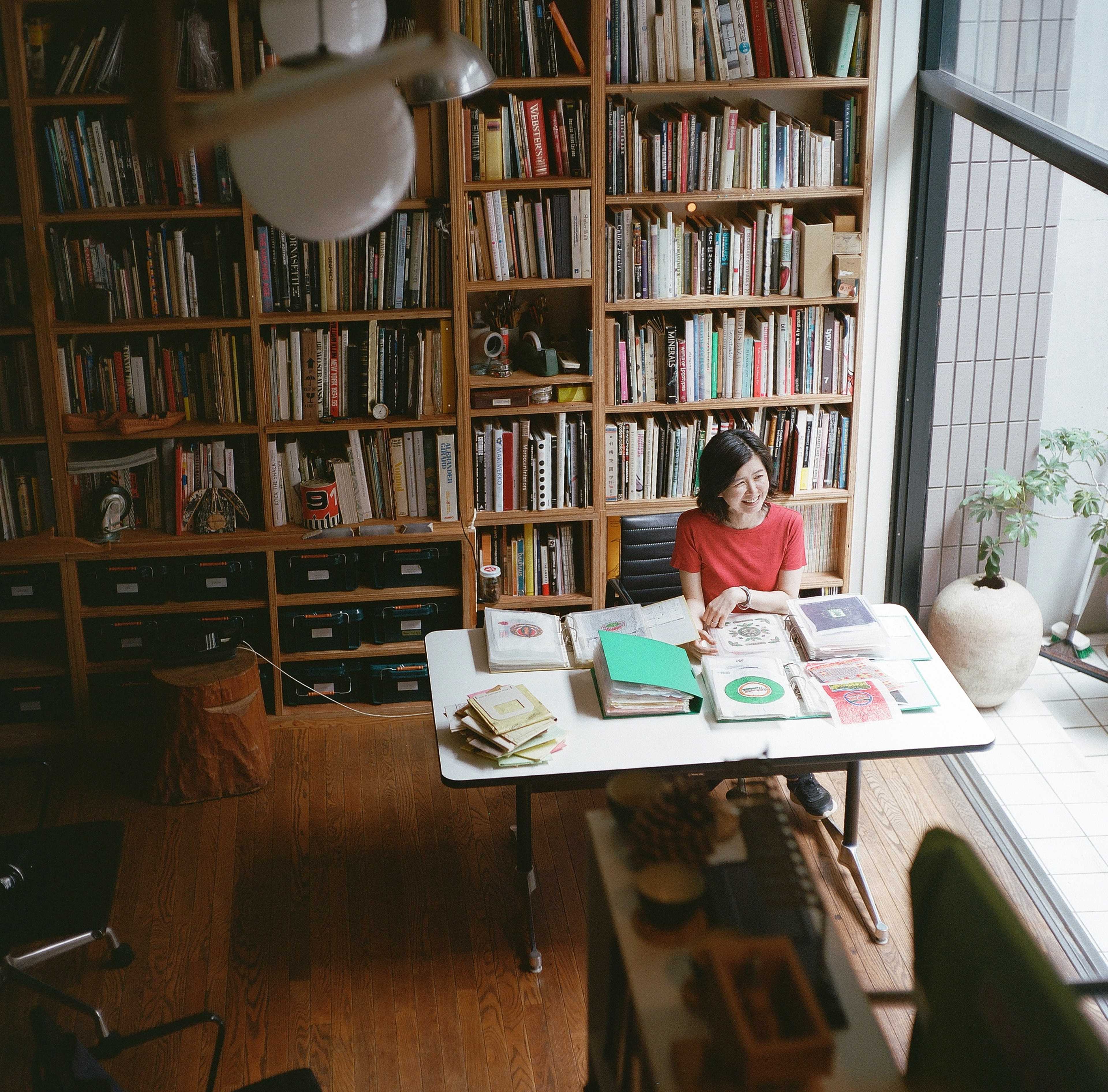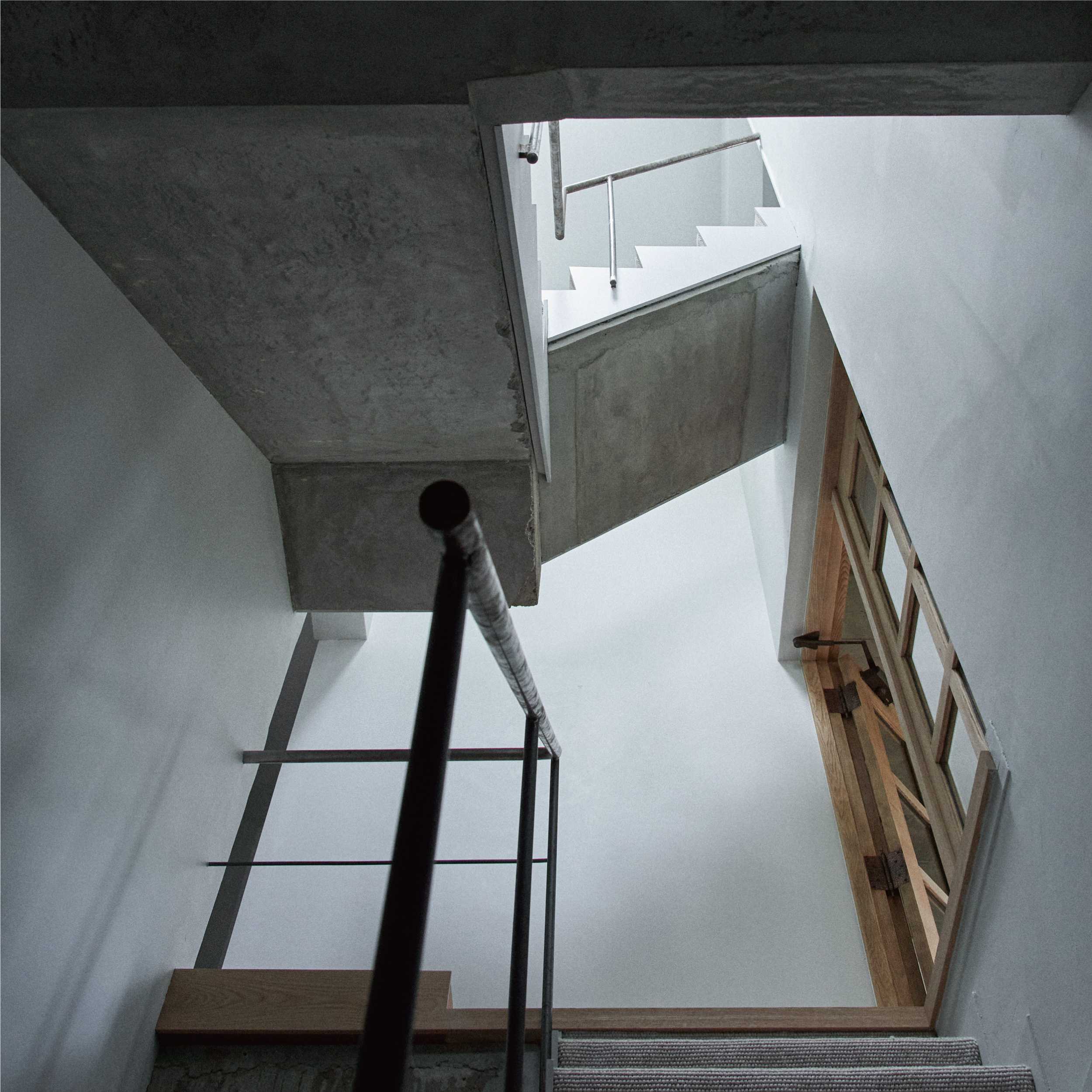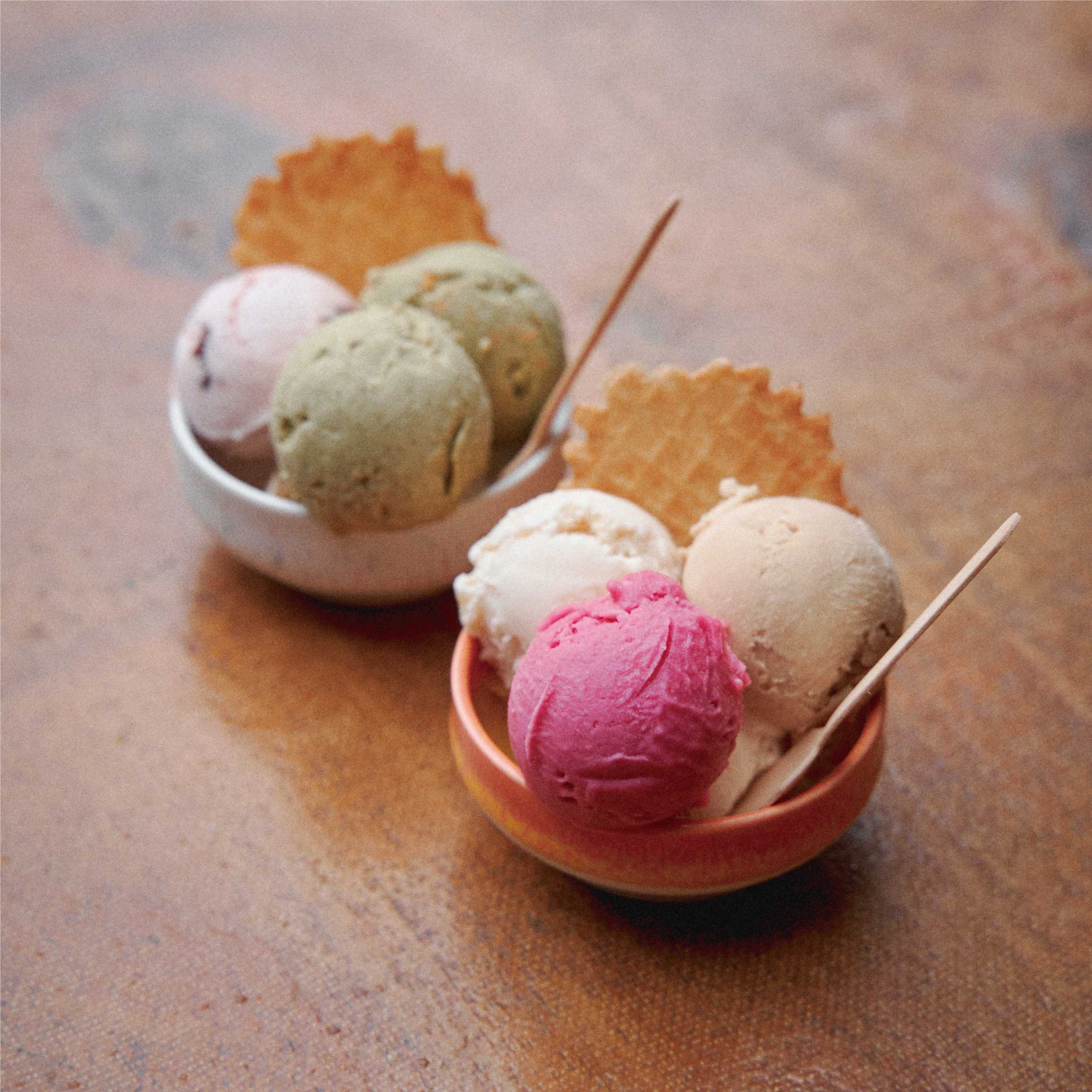Yuri Abelson’s tiny inspirations
Whether it’s a mechanical pen, washi wallet or bridge-inspired bag, Postalco products have a quality that extends beyond just functionality; an endearing nature that allows them to nestle their way into your daily life. This connection to the everyday can be traced back to the brand’s founders, Mike and Yuri Abelson, who share a curiosity for the world and our place within it.
The basement of their Tokyo office is a treasure trove of sorts, filled floor to ceiling with books, prototypes and artworks, evidence of more than two decades of research and enquiry. In one corner, boxes and folders contain collections of various things, often overlooked in the process of daily life, providing an insight into Yuri’s time spent living in Europe and the United States. Interested to explore their links to her work overseeing Postalco’s art direction, we began by asking about her extensive collection of orange wrapping papers.
Yuri Abelson: I started collecting when I moved to Switzerland in my twenties to study graphic design. I’ve always liked stationery, but the orange papers were the first thing I collected. I didn’t put them in a precious place, I just liked collecting the things that appealed to me.
Oranges are one of my favourite fruits, but I love the wrapping paper too. I love the way it is printed, the colours and how playful the graphics are ― they’re not trying too hard to be something. There’s so many kinds, from Italy, Spain, California and other places, and the paper is different as well. Somebody has designed them, but the design is anonymous.
Markets are great for getting to know a place. Whenever I visited the farmer’s market, it became a conversation between me and the vendor: ‘It’s you again, coming to collect the orange paper,’ they’d say. My friends also helped me find papers and I became known, at least in Switzerland, as an orange paper collector.
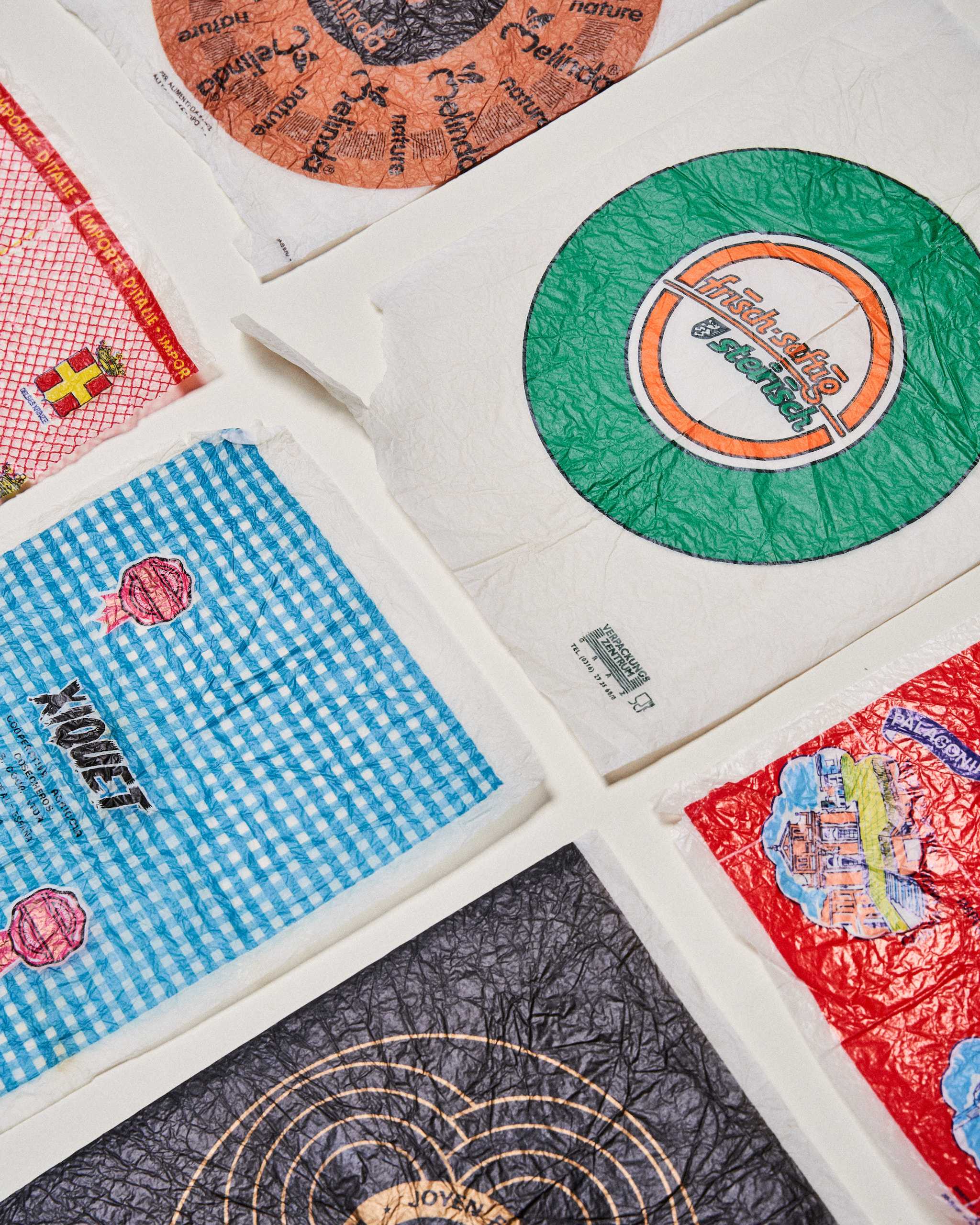
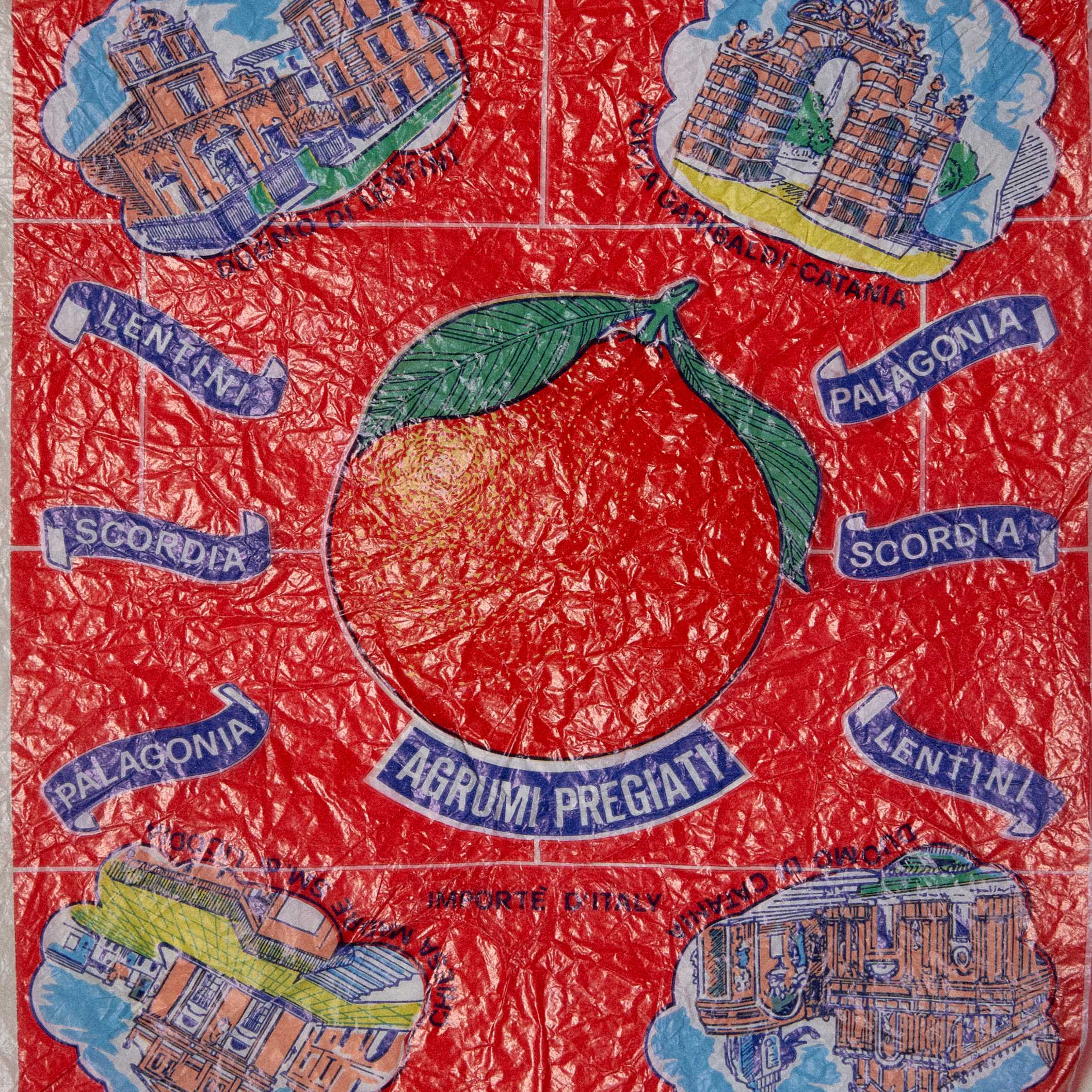
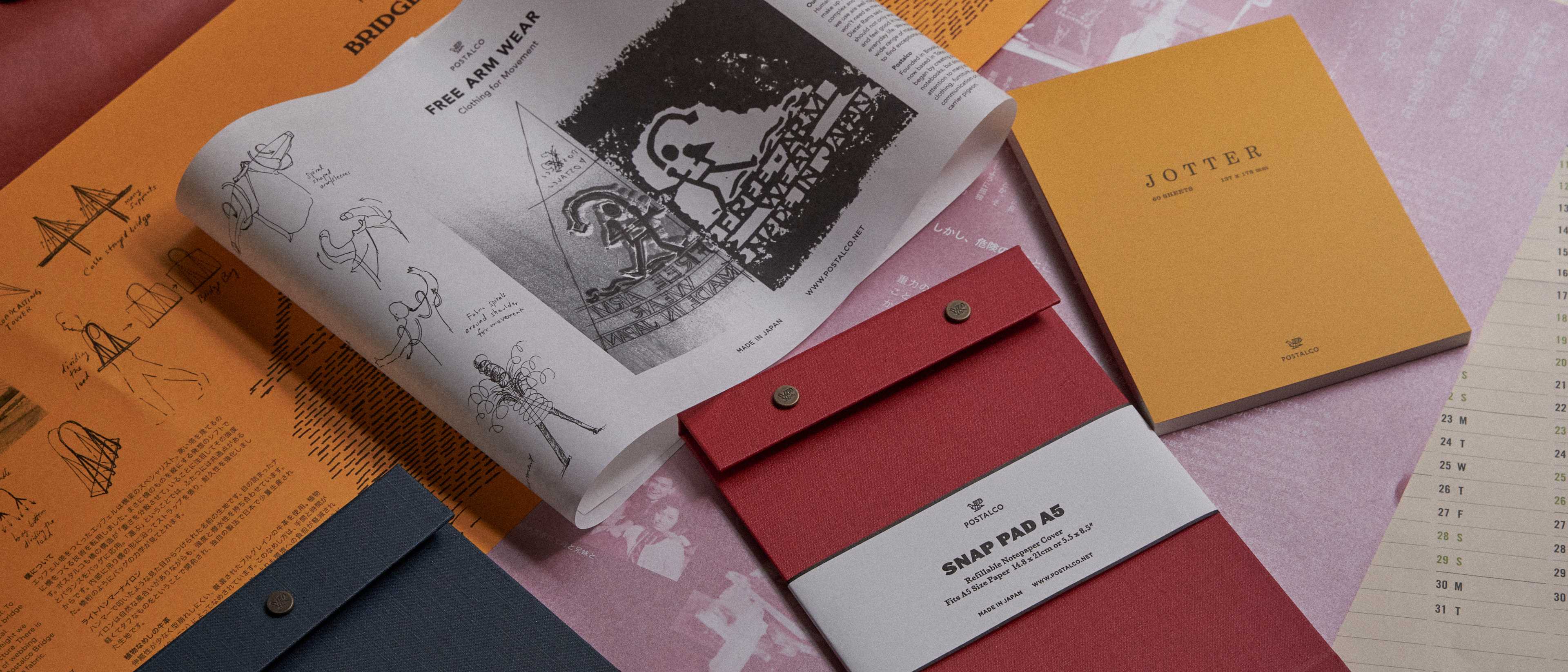
It was more about the act of collecting, rather than building a collection. How have these papers influenced or emerged in your work with Postalco?
Whenever we make something new at Postalco, I choose a colour and give it a name that people can imagine, like bank green or school bus yellow. Colour is a big part of my work, so these collections are like my nutrition, my colour nutrition.
I don’t have rules for colour, but I like colours that you don’t get tired of; colours that naturally blend in with the things around you; colours that don’t stand out too much. Old things like these have the kind of colours that can’t be found in Pantone. They aren’t artificial, they’re natural. I find these colours quite beautiful, they’re my inspiration.
When I design, I aim for a non-designed feel. I spend a lot of time on each design, but I want it to look effortless, not too over-designed or prominent, so people can see it for what it is, rather than who designed it.
Everyone collects and maintains their collections for different reasons.
When people collect things, it’s usually something that will eventually be worth something or have value, like mini cars or watches, but these are just for myself. They’re only valuable to me, and that’s ok.
The elastic bands are for bundling broccoli and other supermarket produce. They aren’t so expensive, but they make me really happy. I like how food and graphics come together, plus the rough texture and printing.
I found the vacuum cleaner bags in a box of dusty things at a flea market. I like how industrial they are and in fact, before we started Postalco, we made a music bag inspired by them, using the portal for the headphone cable.
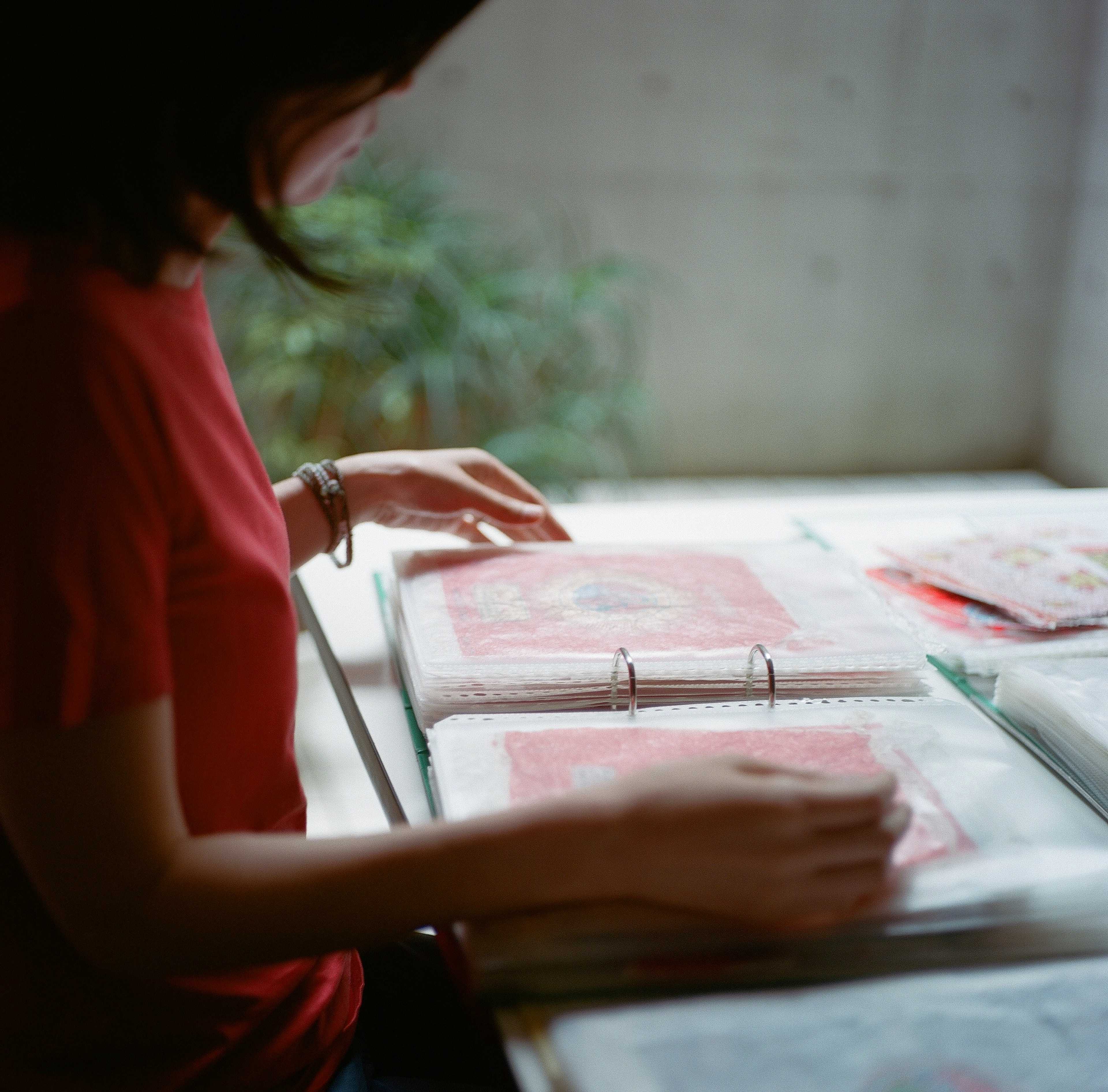
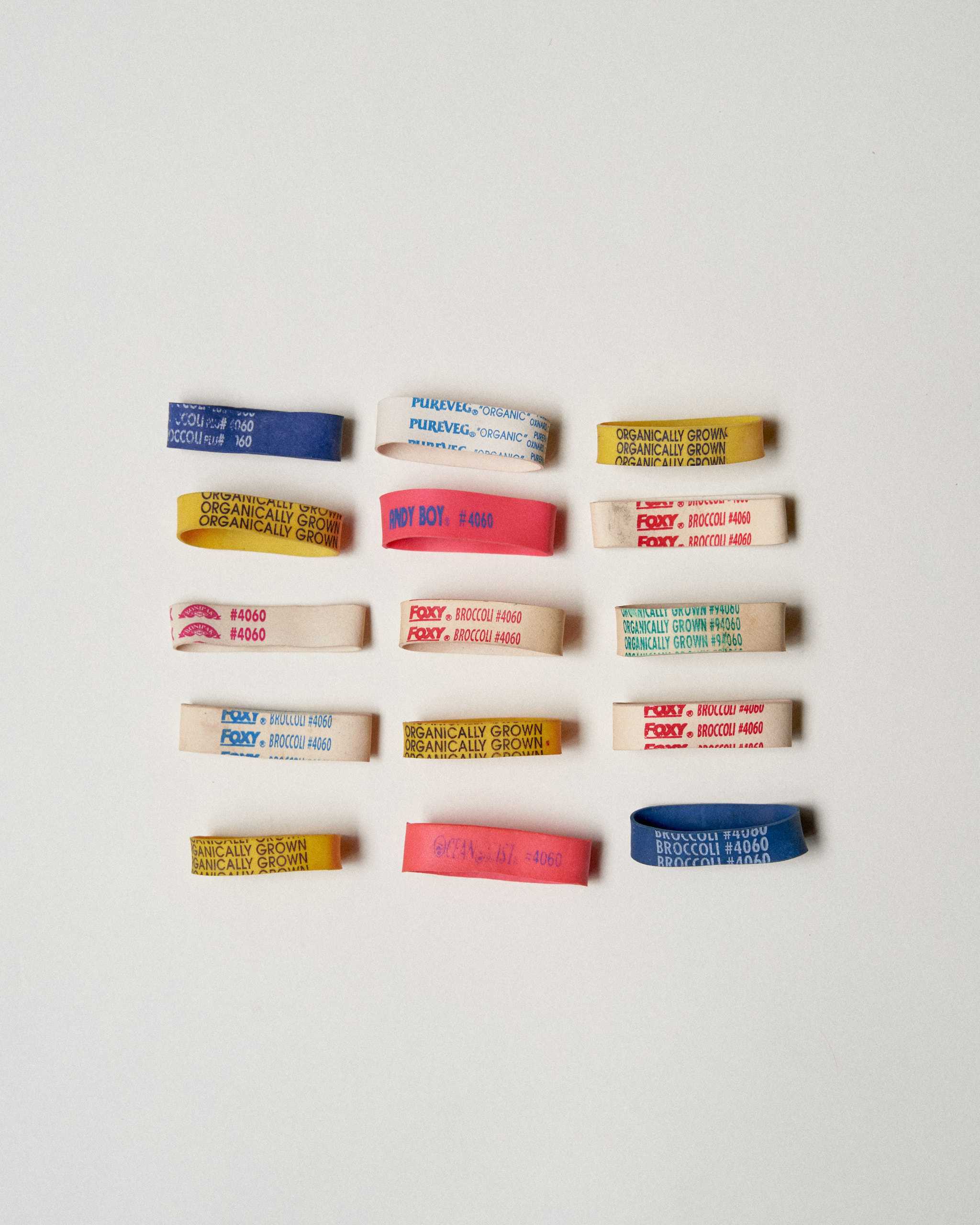
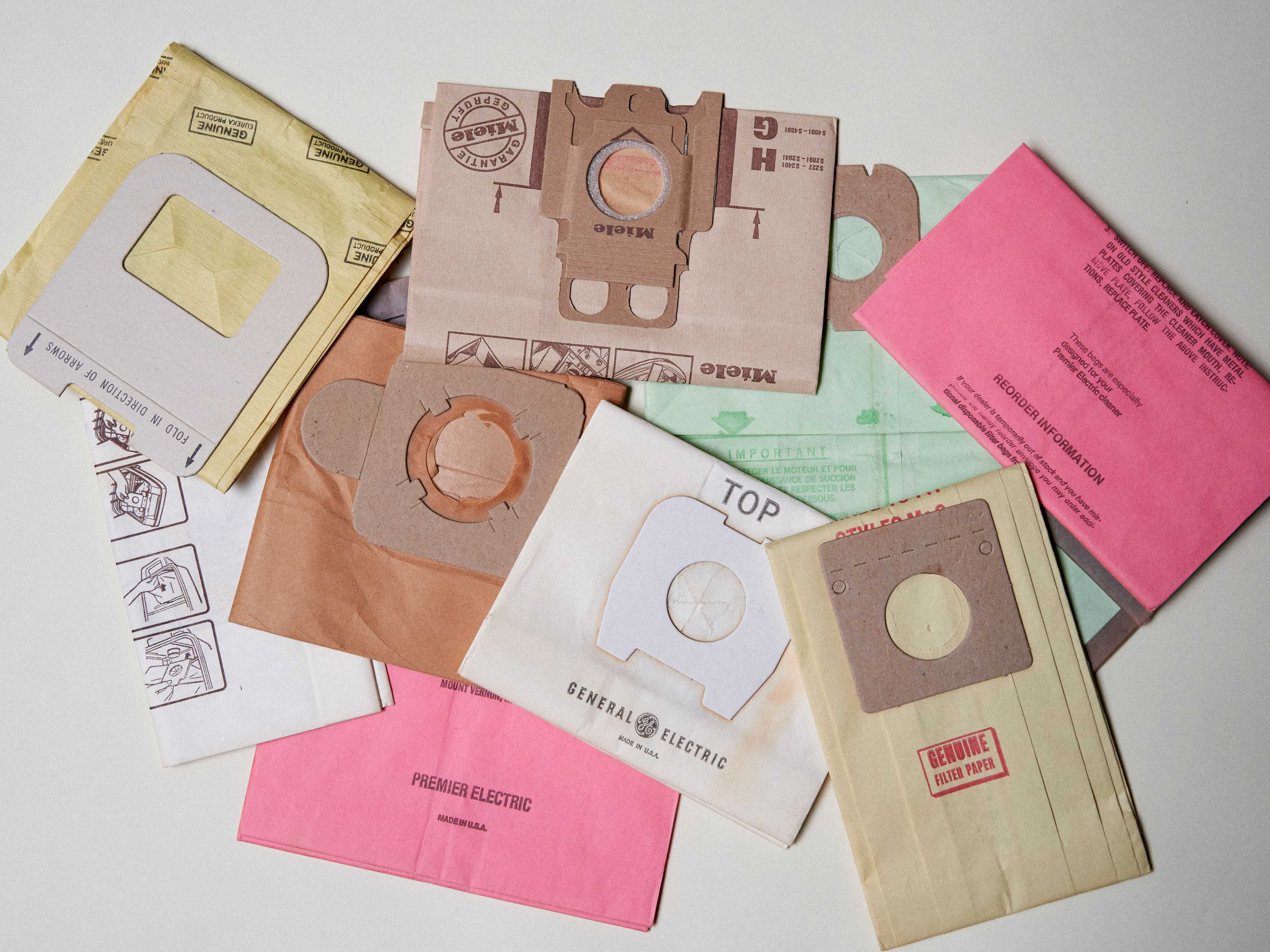
While the collections share some characteristics, they seem to relate to your work in various ways. Searching for these connections feels like a mysterious dot-to-dot puzzle.
Each collection is a dot I guess. I don’t draw much, but when I have an idea I write it down and it becomes something. Everything comes from these inspirations. You have to have your own resources, such as anonymous things and non-designed objects, rather than things that contain someone else’s ideas.
Many of your collections date back decades and have followed you across continents. Do you still collect things?
I don’t collect much anymore, but I really love printed matter. For me, a collection is similar to a book: even if you don’t look at them often, you’re inspired by just having them. It’s the same with friends in distant places: even if you don’t see them often, they’re still a part of you. It’s comforting to know they’re there.
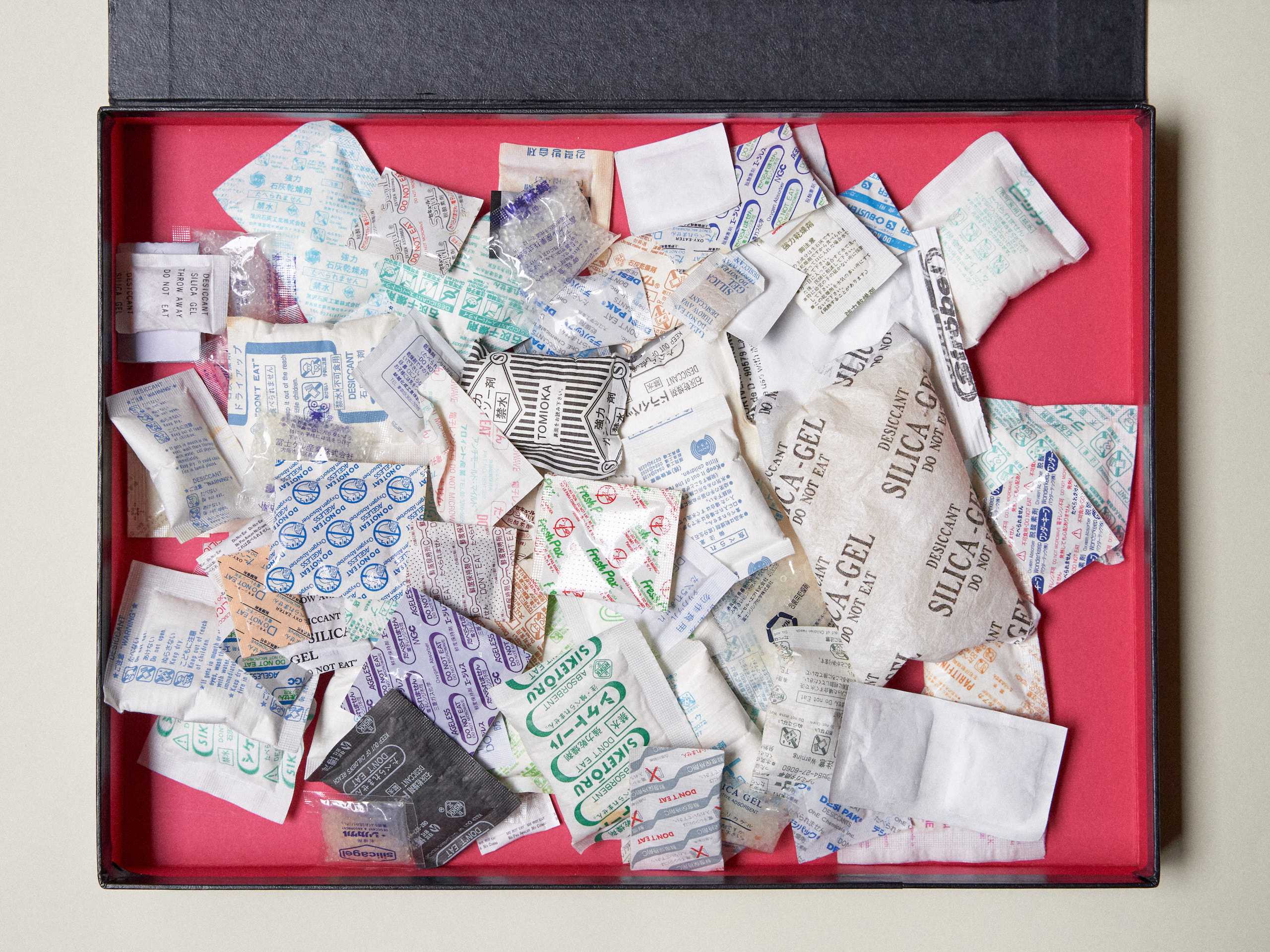
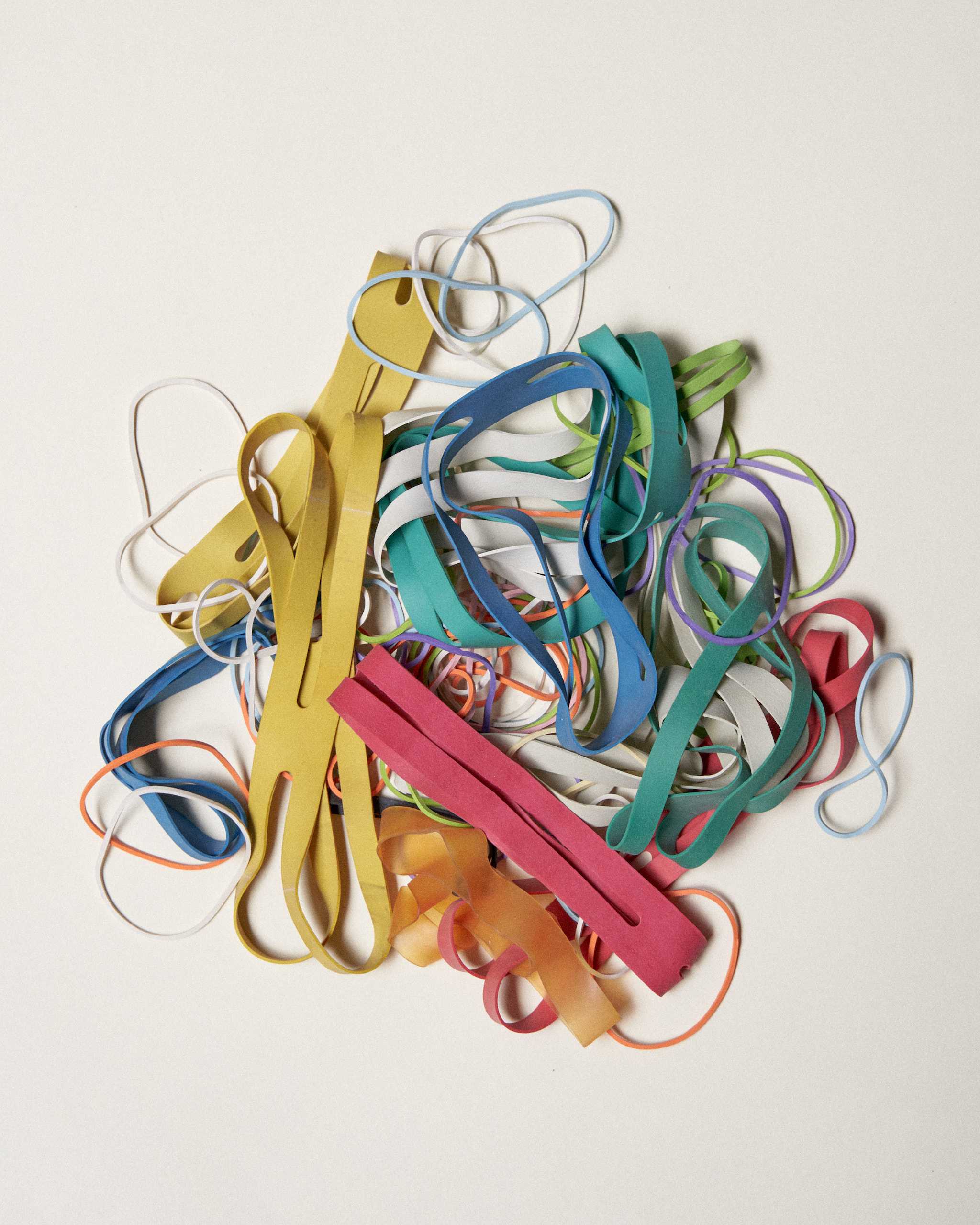
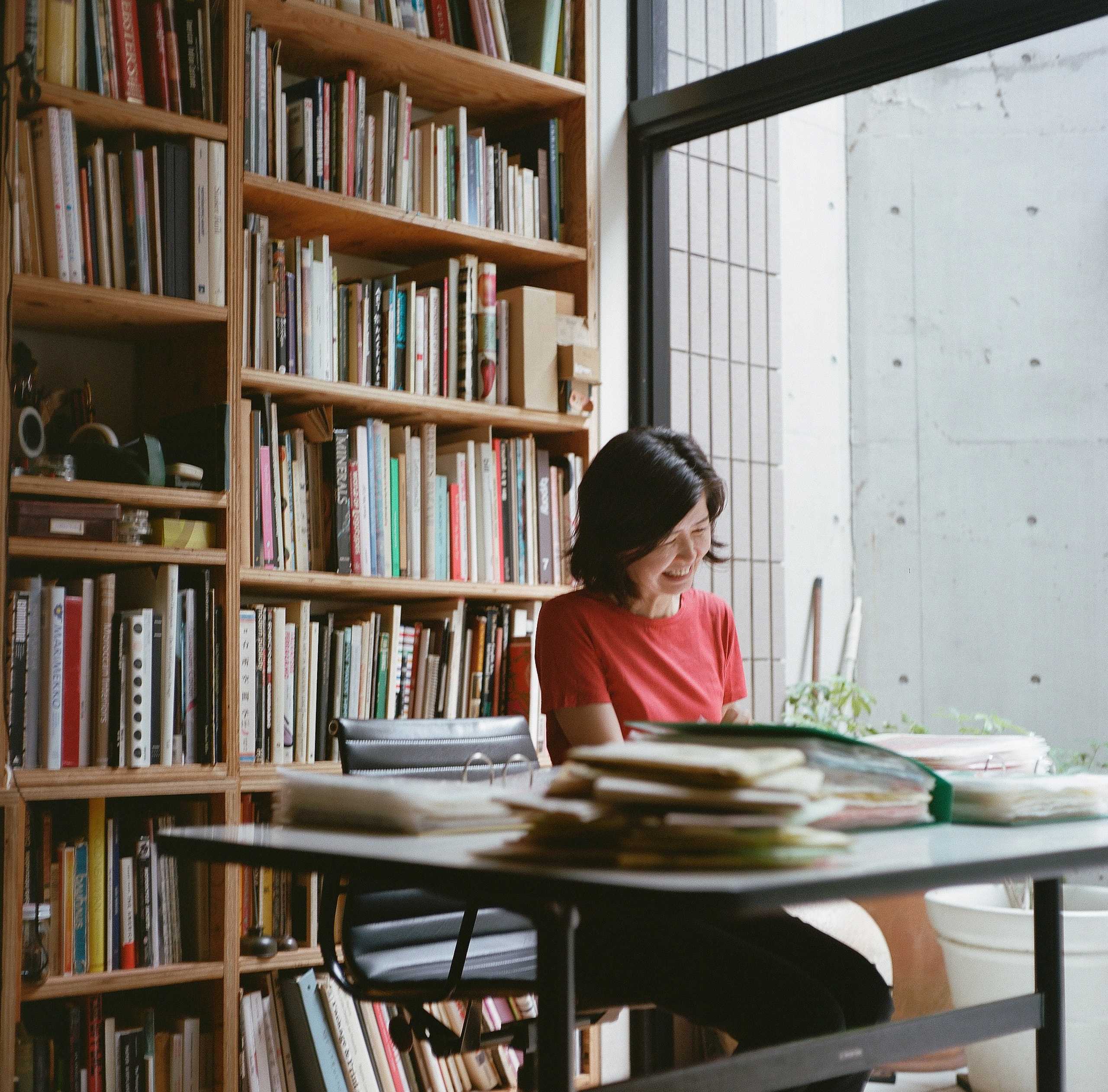
Text by Ben Davis
Photo by Daisuke Hashihara

